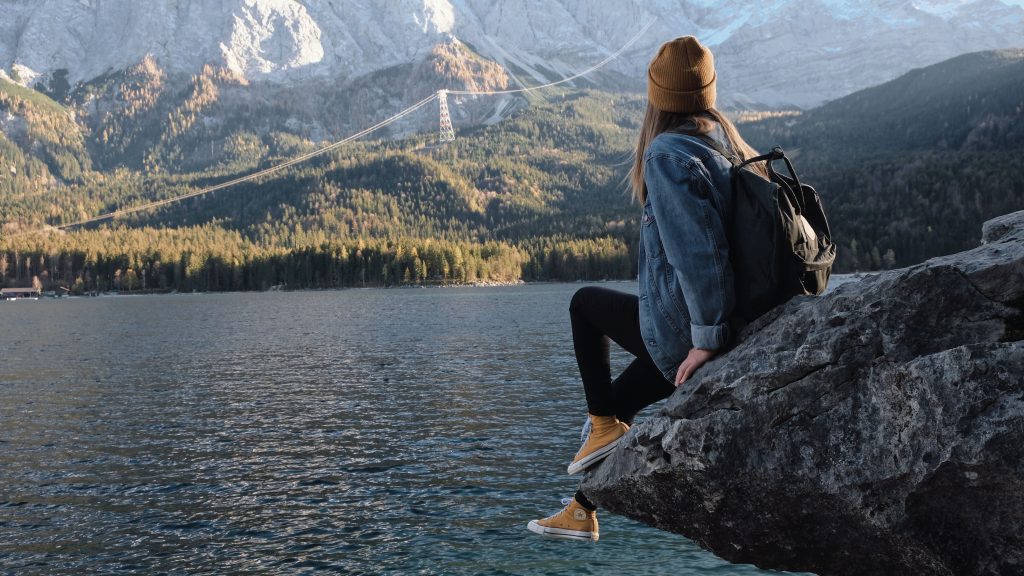All Posts in Category: Pitching
Join Us This Week for Free Travel Writing Lessons on Working with Travel Companies and Tourism Boards
In the two years since we began running regular one-hour travel writing classes, we’ve covered more than 80 topics, including:
- how to land free trips
- how to get paid really, really well for your writing
- how to get on magazine editors’ good sides
- how to navigate every step of the process to land travel content marketing work, including phone calls and proposals
- how to keep your hourly rate down so your bank account goes up
- how to get work done on the road
- how to write, step-by-step, 15 different types of travel articles
- how to land guidebook and other traditional publishing deals
You can grab access to all of our past webinars (and a ton of other resources you can’t find anywhere else) with a subscription to our Dream Buffet or grab them one-by-one when you need them in our On-Demand Webinar Library for a set with the video, audio, transcript, and slides.
But we also air a free replay of one of our travel writing classes each and every weekday.
How to Pitch Five Magazines Looking for City Profiles (Edition VIII)
Welcome to the Friday Freebie Five, a new weekly feature on Dream of Travel Writing’s Six-Figure Travel Writer blog.
Each week, we comb our Travel Magazine Database to bring you five magazine sections open to freelancers around a theme–front-of-book trend pieces, long-form first-person features, short narrative postcards–to inspire your pitches.
National Geographic Traveler
“Smart Cities” highlights a city undergoing an interesting cultural shift often with a focus on new initiatives to protect the environment. There is a 150-word introduction covering why and how the city is changing. This is followed by the subheadings “Eat,” “Play,” “Stay,” and “Shop.” There are three options highlighted for each covering restaurants, attractions, hotels, and shops respectively with a third-person description. A quote from a local can sometimes be found in the introduction. Cities covered in this section include Aarhus, Denmark; Newcastle, Australia; and Kigalia, Rwanda.
This Travel Article Pitch Blew Me Away–And the Reason Why Will Surprise You

While reviewing pitches on a coaching call recently, I gushed at length to a writer I’ve been working with for probably about a year now about how commanding her “about me” or P3 of her pitch was.
She was pretty tickled about this, because she insisted she really hadn’t done anything different in it than the last few pitches she sent me.
I tried to hone in one what it was in the language that made confidence simply waft from the screen and realized that I didn’t even recognize a number of the places she had listed as her publication credits. That wasn’t “it”—there was still something buried in the language and syntax—but I exclaimed during my search that I didn’t even know she had placed stories in some of these outlets.
How to Pitch Five Magazines Looking For Celebrity Interviews (Edition IV)

Welcome to the Friday Freebie Five, a new weekly feature on Dream of Travel Writing’s Six-Figure Travel Writer blog.
Each week, we comb our Travel Magazine Database to bring you five magazine sections open to freelancers around a theme–front-of-book trend pieces, long-form first-person features, short narrative postcards–to inspire your pitches.
Condé Nast Traveler
“The Globetrotter” is a celebrity profile written in a Q&A style. The piece runs from 750 to 1,000 words and focuses on the celebrity’s travels. There are about 15 questions which change with each issue but some are frequently seen including: “where you have just come back from?” “where in the world have you felt happiest?” and “name a place that lived up to the hype.” Actresses Chloë Sevigny and Rosamund Pike were recently profiled for this section.
“What is story selling and how can I use it to pitch clients?”
We’ve got a new book out, 101 Things You Need to Know to Make it as a Travel Writer, that answers 101 questions that we hear from travel writers all the time that are holding them back from achieving their Dream of Travel Writing. To celebrate the new book, we’ll be tackling a new sticky travel-writing situation each Monday here on The Six-Figure Travel Writer blog.
“What is story selling and how can I use it to pitch clients?”
Story selling is this really neat thing where you use some very age-old techniques of how to create a beginning, middle and end of a story around the issue that you see that an organization is facing but you paint yourself as an integral part of that story. With story selling, you show the prospect that the golden land on the other side isn’t possible without your help.
How to Pitch Five Magazines Looking for Profiles of Interesting People (Edition III)
Welcome to the Friday Freebie Five, a new weekly feature on Dream of Travel Writing’s Six Figure Travel Writer blog.
Each week, we comb our Travel Magazine Database to bring you five magazine sections open to freelancers around a theme–front-of-book trend pieces, long-form first-person features, short narrative postcards–to inspire your pitches.
Outside
“The Outsider” takes the form of a profile covering an adventurer, athlete, or someone related to the outdoors, wildlife, or the environment in some way. The piece runs from 800 to 1,200 words long and covers who the person is, their work, what their upcoming projects are, and any interesting or humorous anecdotes about their career and life. Articles are written in third person and include quotes throughout the piece. Sometimes, these are written in the style of a third-person introduction followed by a collection of quotes from the person being profiled and sometimes the quotes are interwoven throughout the article. Examples include “Why the World Needs Barry Lopez,” profiling the author and his new book Horizon, “The Warrior Mentality,” about special forces veteran David Goggins and his new memoir, and “The Human Experiment,” a profile of author and personal trainer, Ben Greenfield, on the extreme things he does in the name of fitness.
Announcing Our Fall and Winter Travel Writing Retreat Schedule!

Once again, I want to thank everyone who contributed their thoughts on our upcoming event schedule and designing our new Travel Writers’ Detox + Reset event.
We’ve opened up early-bird pricing for all of our retreats in next week’s newsletter, with limited $150-off spots in each event open on a first-registered, first-served basis.
How to Pitch Five Magazines Looking for Front-of-Book Trend Pieces (Edition III)
Welcome to the Friday Freebie Five, a new weekly feature on Dream of Travel Writing’s Six Figure Travel Writer blog.
Each week, we comb our Travel Magazine Database to bring you five magazine sections open to freelancers around a theme–front-of-book trend pieces, long-form first-person features, short narrative postcards–to inspire your pitches.
Hemispheres
“Navigator” is made up of about 10 articles written by different contributors which cover art, culture, food, people, and travel topics in United destinations worldwide. Articles range from 200 to 500 words and are written in third person. Quotes are sometimes used from relevant people, such as business owners or locals. Articles often describe a newly opened hotel, attraction or show or give travel recommendations to the reader. The articles change with each issue, although “The Meal,” “The Stay,” “The Drink,” “The Vintage,” “The Detail,” and “The ‘Hood” are seen frequently. “The Meal” describes what goes into a different dish in a new restaurant. “The Stay” describes a newly opened hotel covering the décor, amenities and food. “The Drink” covers new drinks and cocktails and “The Vintage” describes a particular bottle of wine. “The ‘Hood” rounds up about six recommendations from local business owners for things to do in a different city each issue. There are usually about three further articles which change with each issue. These could cover, newly opened bars, museums, a quirky attraction or a trend, for example. Recent examples from “Navigator” include “Solitary Contentment,” describing the Àni Dominican Republic resort, “Old Dog, New Tricks,” covering Deep Dog, a new gastrobar in Seattle, and how they make their signature hot dog, and “Swim With an Olympian,” covering the latest offering from the Palace Hotel Tokyo where guests can book a swimming lesson with an Olympic swimmer.
“How do I write a pitch for a travel magazine article?”
We’ve got a new book out, 101 Things You Need to Know to Make it as a Travel Writer, that answers 101 questions that we hear from travel writers all the time that are holding them back from achieving their Dream of Travel Writing. To celebrate the new book, we’ll be tackling a new sticky travel-writing situation each Monday here on The Six-Figure Travel Writer blog.
“How do I write a pitch for a travel magazine article?”
All pitches should have three key sections, typically in the same order, to be successful:
- the lead/lede or intro grabbing the editor’s attention and showing why your topic is interesting
- the outline on how you’ll write the piece that fleshes out what it will be about and shows where it fits in the editor’s magazine or website and when
- the “I’m so great” (ISG) paragraph or why you should be the one to write the article
How to Pitch Five Magazines Looking for Mini Essays
Welcome to the Friday Freebie Five, a new weekly feature on Dream of Travel Writing’s Six Figure Travel Writer blog.
Each week, we comb our Travel Magazine Database to bring you five magazine sections open to freelancers around a theme–front-of-book trend pieces, long-form first-person features, short narrative postcards–to inspire your pitches.
Wingspan
“Double Take” is a 400-to-500-word article that explores bicultural life in Japan. It’s written in first person, usually by an expatriate living in Japan, and frequently centers around one specific encounter that showcases the intersection of two cultures. For example, one recent article discussed what it was like to receive the kairan — or “neighborhood circular” — as a foreigner. In this story, the writer described feeling pressure to circulate the kairan around her neighborhood, despite lacking Japanese fluency. Like many “Double Take” articles, the writer incorporated scenes, dialogue, personal narration, and frequent Japanese terminology throughout the piece. Other past articles discussed a Japanese-American couple that disagreed on the importance of sugar, a mother who helped her son use Japanese ferments for a science experiment, and an expat family who chose to raise their kids in Japan. Text is accompanied by original artwork. There are no images or sidebars.






